Laptop Mag Verdict
The JBL UA Project Rock Over-Ear Training Headphones are a sporty beast with monstrous performance in an indestructible shell.
Pros
- +
Energetic, customizable sound
- +
Lots of features via JBL Headphones app
- +
Remarkably durable
- +
Effective noise cancellation
- +
Superb battery life and connectivity
Cons
- -
Digital assistant setup is aggravating
- -
Uncomfortable when worn for long stretches
Why you can trust Laptop Mag
Expanding on the Project Rock line that he created with Under Armour, Dwayne “The Rock” Johnson has teamed up with JBL once again to release the ultimate set of wireless sport headphones. Introducing the JBL UA Project Rock Over-Ear Training Headphones.
- Our expert picks for the best noise-cancelling headphones, per budget and style
- Check out our Bose 700 review
- …and our Sony WH-1000XM4 review
The latest entry in this collaboration series with JBL and UA now comes in over-ear form and introduces a variety of upgrades, including app support, longer playtimes, stronger audio, and tank-like durability. It also boasts adaptive noise cancellation to filter out distractions based on shifts in your environment. Apart from some comfort and digital assistant issues, the Project Rock Over-Ear Training Headphones are an elite workout companion and some of the best wireless headphones money can buy.
- JBL UA Project Rock Over-Ear Training Headphones at JBL for $299
- JBL UA Project Rock Over-Ear Training Headphones at Under Armour for $299
JBL UA Project Rock Over-Ear Training Headphones review: Availability and price
The JBL UA Project Rock Over-Ear Training Headphones are sold for $299.99 in black at major online retailers, including Best Buy. They can also be purchased directly from JBL or Under Armour. Inside the box are a utility carrying case with a carabiner, charging cable, aux cable, user guide, and Brahma Bull sticker.
If we’re talking wireless sports headphones, then the older JBL UA Sport Wireless Train ($250) and Adidas RPT-01 ($169) are the closest things to rivals. As for noise-cancelling models, these headphones face stiffer competition in the AirPods Max ($549), Bose 700 ($399), Sony WH-1000XM4 ($349), and the soon-to-launched Bose QuietComfort 45 ($329).
JBL UA Project Rock Over-Ear Training Headphones review: Design and comfort
Only one word can describe the design: brolic. These headphones look and feel incredibly sturdy, thanks to premium materials such as aluminum (headband), tough rubberized plastic (earcups), and foam mesh covering (ear cushions). They leave the impression that you can drop a dumbbell on them and won’t develop a scratch. More so, these cans are built to survive extreme workout conditions and the daily abuse you’ll put them through. JBL also added IPX4 certification for sweat and water resistance.
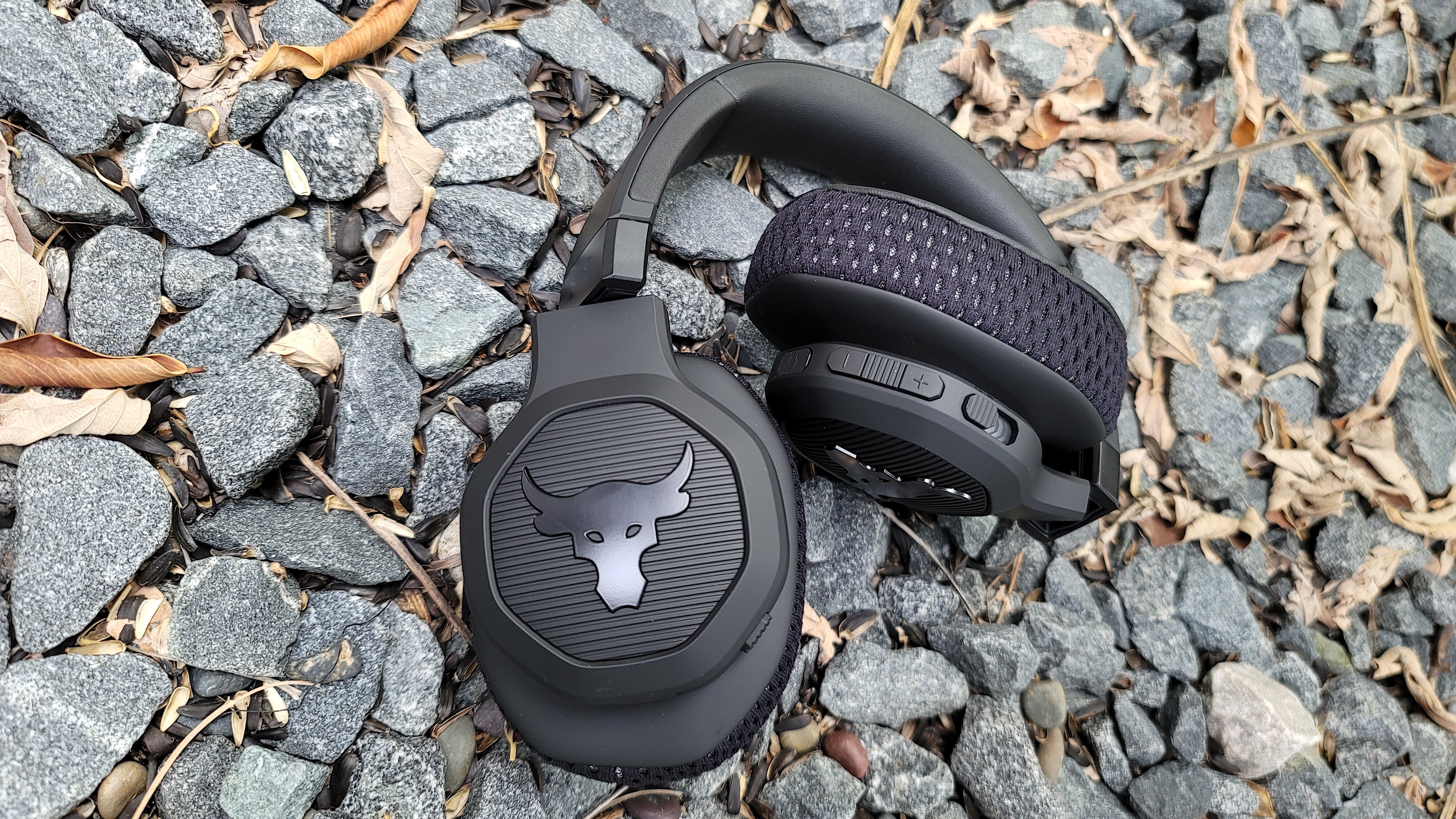
Detailing shouldn’t go unnoticed either. Yes, the Rock’s signature Brahma Bull logo looks cool on the front, but so do the number settings on the headband, three-strip LEDs, and vinyl-like exterior.
Even though it adds extra weight to what’s already a hefty pair of wireless headphones (10.4 ounces), the utility carrying case is the perfect travel accessory for this product. The outside is hard as hell and there is plenty of room to store everything JBL affords you, and much more. Being able to attach the case to gym bags or backpacks using the carabiner is clutch as well.
Sign up to receive The Snapshot, a free special dispatch from Laptop Mag, in your inbox.

Under Armour’s Storm Super Grip technology was employed for optimal fit, but it does more harm than good. The headphones hold too much of a tight grip on the skull. I get that JBL x UA wanted to create an over-ear model that never slips off, no matter how acrobatic or motion-heavy workouts get. However, the clamping force becomes unbearable after an hour of use.
The SuperVent fabric feels hot the longer you wear the headphones, but the perforations help to increase breathability and prevent moisture build-up. You’ll get decent comfort out of ear cushions, plus they’re easily removable and hand washable.
JBL UA Project Rock Over-Ear Training Headphones review: Controls and digital assistant
JBL offers dynamic control options consisting of multifunctional buttons, on-ear detection, and voice activation. There’s a module with buttons on the right earcup to manage different functions and produce great tactility to reassure users that commands are being met. The volume rockers can also skip (+) or play the previous track (-) when holding the button down for two seconds, while the middle button handles play/pause and calls. Above the module is a spring-loaded toggle (power/pairing mode) with nice recoil feedback.
Let’s get to the digital assistant, which has been a major issue with JBL’s latest releases. According to JBL, the Project Rock Over-Ear Training Headphones support voice activation for Google Assistant and Alexa, as well as digital assistance for Siri, Bixby, and even Cortana. Most headphones with this feature make the native assistant on your device available right away, but JBL makes you go through an entire process to access it.
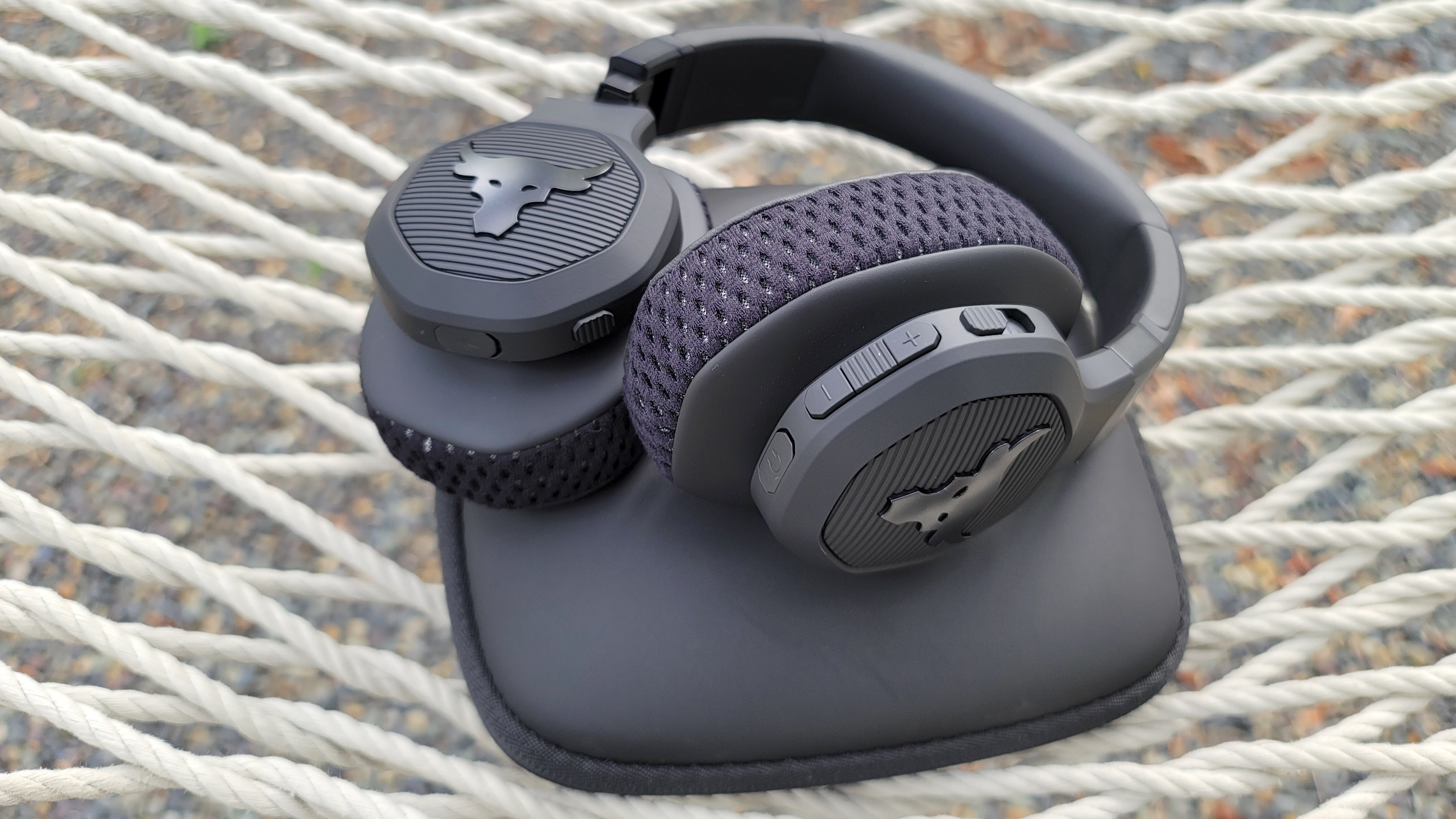
First, you’re required to select an assistant in the companion app. One would think that’s enough to operate the assistant they selected, but this action only works for Siri. To get Google Assistant working, you must go into the Bluetooth settings, then select the headphones settings and go through the entire Google Assistant setup. That’s exceedingly annoying. You’ll need the Alexa app downloaded to use Amazon’s AI bot as well. As for Bixby, it wouldn’t even turn on when connected to my Galaxy Note20 Ultra.
When Google Assistant and Siri did work, both operated smoothly. Every syllable and verbal inquiry were registered accurately, and responses came in quickly. “Hey Google” voice activation was spot-on too.
JBL UA Project Rock Over-Ear Training Headphones review: Audio quality
These are some of the most versatile-sounding wireless headphones on the market. Not only are you getting warm, impactful sound out of the 40mm drivers, but there are also several features and listening modes that enhance the listening experience in different ways.
You can choose to stay with JBL’s default sound signature, which is neutral right out of the box with an emphasized low end, but sound can be customized via EQ in the app. Create your own profile by adjusting the frequency levels or select from four presets: Jazz, Vocal, Bass, and Piano. It’s a bit surprising to see the JBL Club Pro+ TWS EQ missing, especially since it is JBL’s most well-rounded EQ and was included on the Live 660NC. Despite the omission, the other EQs are fantastic alternatives.
The kicks and snares on AC/DC’s “Back in Black” were amplified when enabling Bass, kick-starting my workout routine on a high note. Every strike of the drum felt like a punch to my ear. I thought the mids and highs would suffer, but they didn’t. The guitar riffs were electrifying and even the hi-hats were given some shine. Jazz and Piano were interchangeable and came in handy when listening to melodic recordings. I was digging the instrument separation on Leroy Hutson’s “Cool Out,” which made each musical tool sound distinctive. Vocal also delivered great midrange on ballads and live performances.
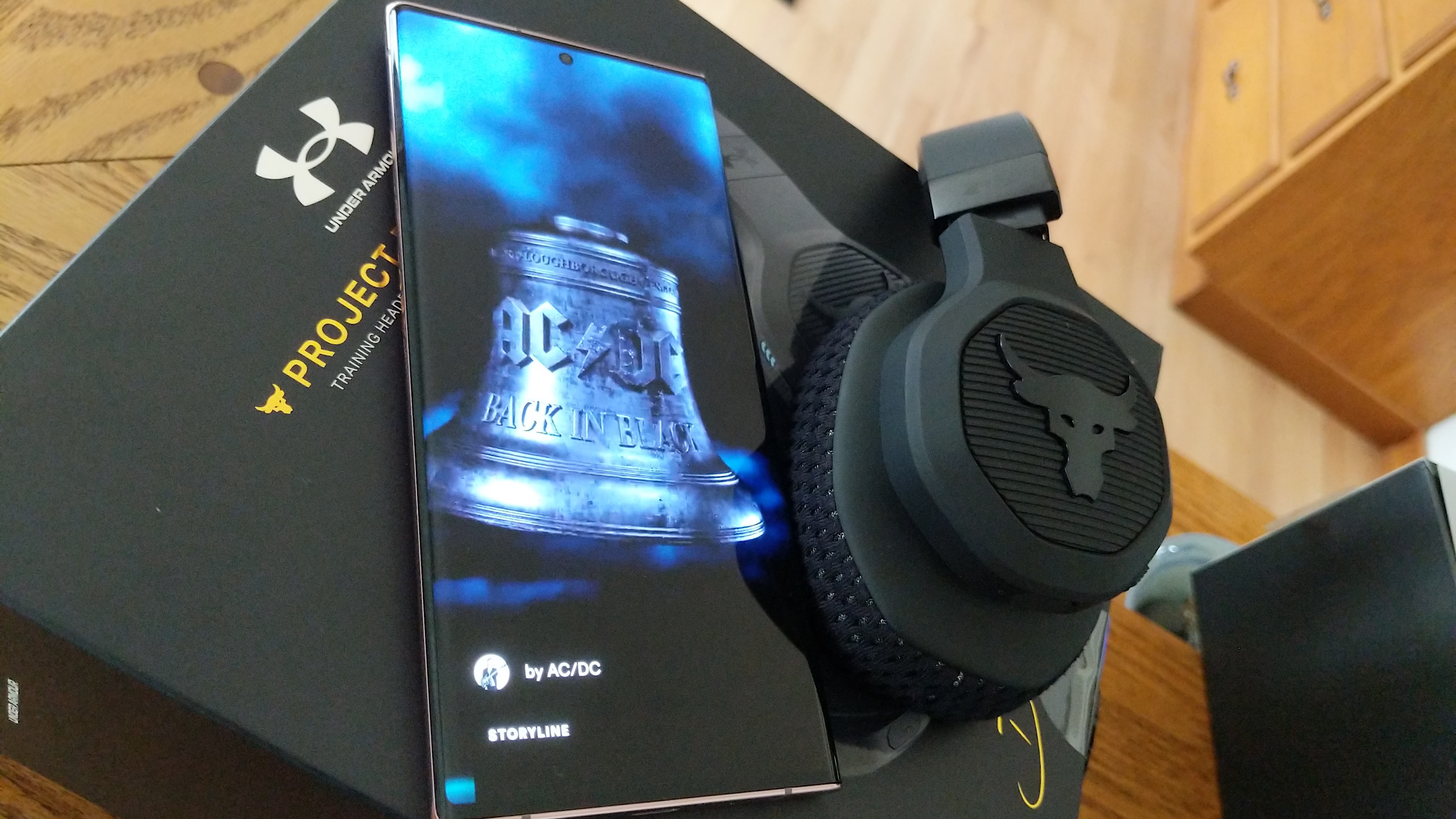
But the Project Rock Over-Ear Training Headphones have something that no other JBL headphones or wireless earbuds come with. That would be the Project Rock EQ, a custom preset the actor helped tune to “crush workouts.” It’s surprisingly good and is tuned better than the Bass EQ, which is too bottom-heavy and affects clarity on some recordings. This was evident when playing Puff Daddy’s “Been Around the World,” where the bass response was refined, and vocals were articulated well.
Above the EQ is a Smart Audio & Video setting with three modes that adjust audio performance by priority. Normal stabilizes connectivity, Audio produces the best sound quality, and Video syncs the sound on videos. Those with selective hearing might hear or notice the subtle differences between each mode, but not everyone will. I saw the lip synchronization on YouTube clips improve when turning on Video, while audio was a bit more polished when switching back to Audio.

Had it not been for the user guide, I may have completely overlooked the aux port at the bottom of the right earcup. Knowing you can use any pair of wireless headphones in wired mode is always a plus, especially when trying to preserve battery life. Using the bundled aux cable gives you satisfying results, though certain elements like bass and clarity take a dip.
Be mindful not to blast the headphones too high around company because they bleed sound at a high level.
JBL UA Project Rock Over-Ear Training Headphones review: Active noise cancellation
JBL opted for adaptive noise cancellation instead of active noise cancellation. Two adaptive noise-cancelling modes were designed for these headphones – Everyday and Active – each one suited for a specific occasion. Everyday is mainly useful for silencing common distractions such as chatty co-workers and iPhone ringers, as well as droning noises from a centralized AC or deep freezer. Louder noises won’t be completely blocked out, but they are muffled enough to keep listeners focused on fitness activities.
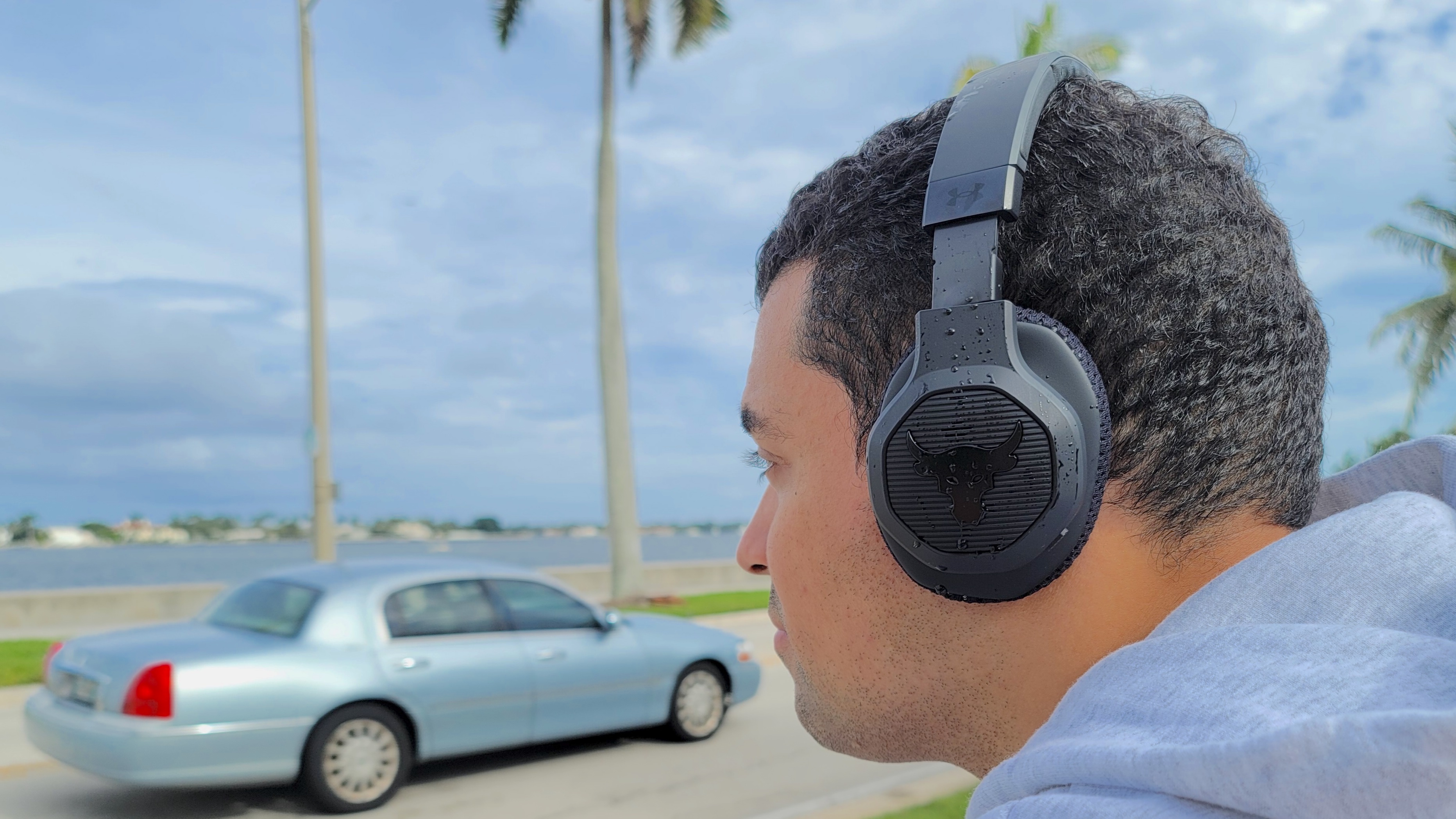
Active is “optimized for outdoor activities” and you’ll notice the difference in performance when enabling it. JBL’s mics do a fantastic job of adapting to outdoor scenarios, keeping disruptions like landscaping tools and whisking cars to a minimum during walks. The only noises that grabbed my attention were high-frequency ones such as my infant boy’s cries and ambulance sirens; this was the case with either mode.

Bionic Hearing is JBL’s version of transparency mode and lets you hear surroundings with two sound technologies: Ambient Aware and TalkThru. With Ambient Aware, the mics pipe in more external sounds to increase your awareness of surroundings when listening to music. It works well and is a must for outdoor runners that want to keep tabs on traffic. TalkThru is geared towards those who want to engage in chats without pausing music or removing the headphones. Essentially, the feature drops volume down to about 15 percent and allows you to hear conversations clearly. I found it most useful when passing along coffee orders to my barista.
JBL UA Project Rock Over-Ear Training Headphones review: App and special features
Most functionality runs through the JBL Headphones app. Again, here is where you gain access to previously discussed features such as Noise Cancelling, Ambient Sound Control,
Smart Audio & Video, and EQ. All of these are placed on the home screen, along with a battery level indicator for the headphones.
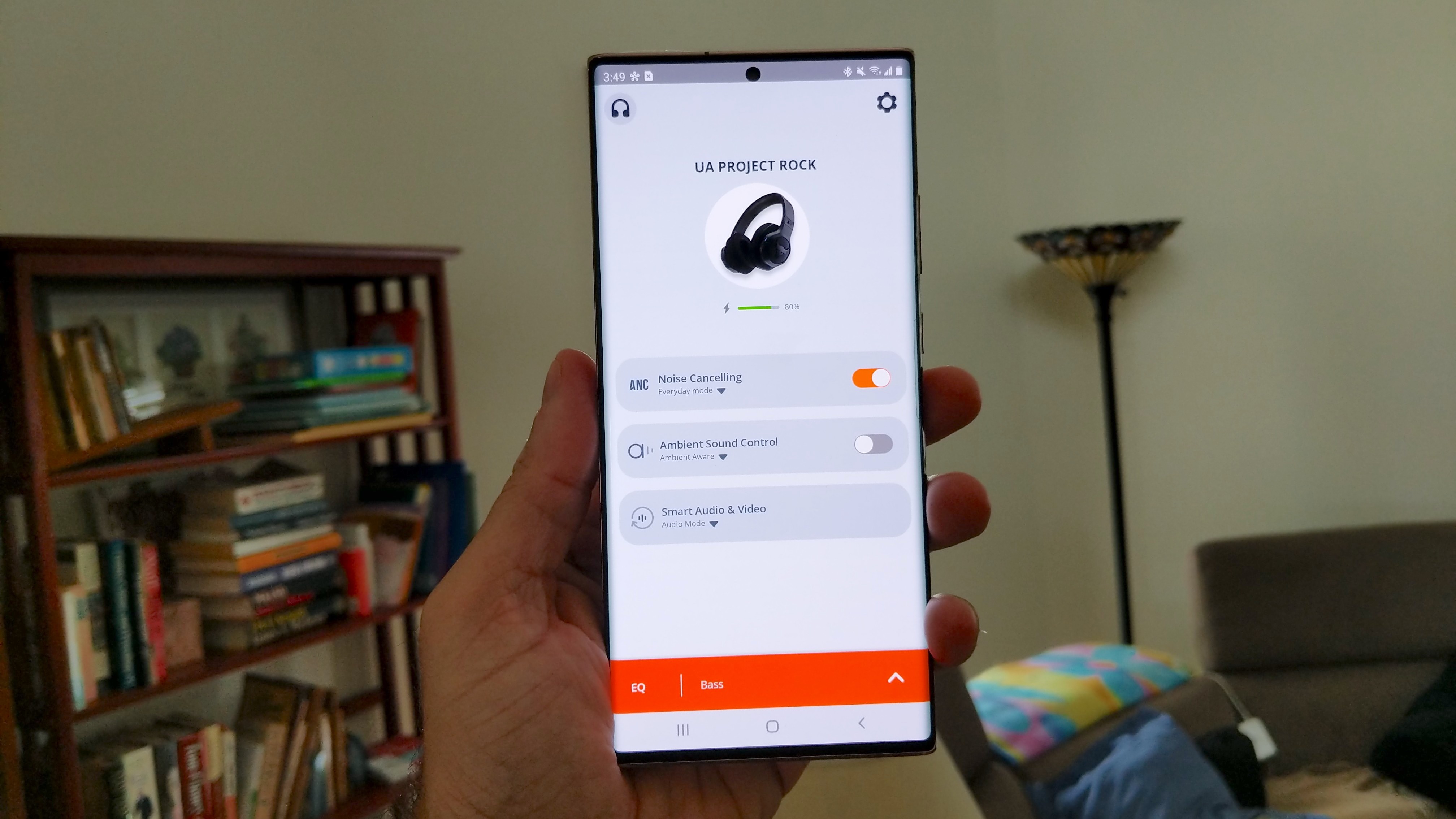
Select the Settings page (hit the cogwheel icon on the top right) and there are a handful of other perks worth checking out. You can assign the function button to either the voice assistant or noise cancellation, as well as enable the auto-off timer, on-ear detection, and voice assistant. Firmware updates come part of the package as well.
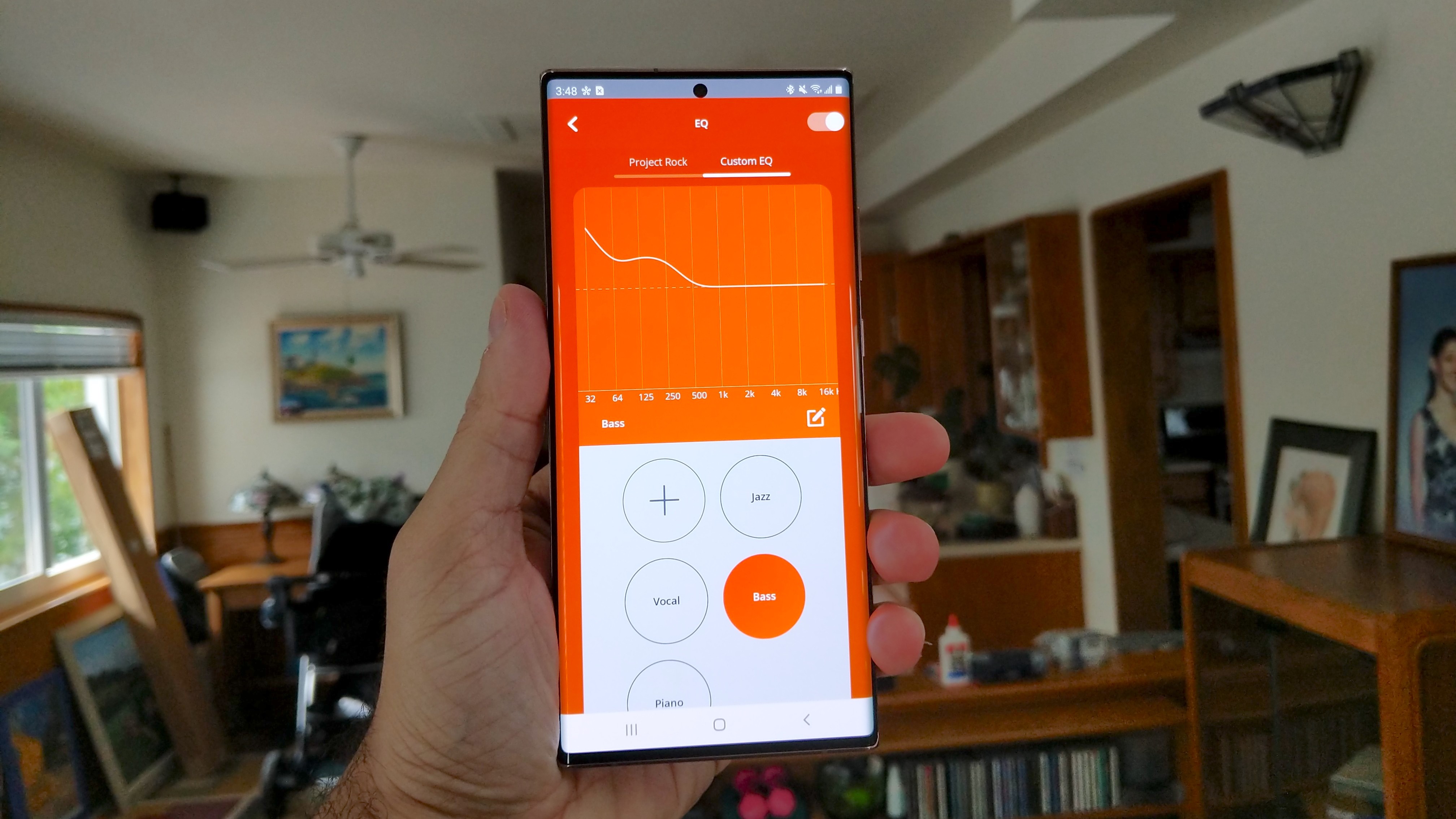
As a bonus, a 12-month MapMyFitness Premium Membership comes included with the purchase, one of the best running apps for tracking fitness performance. JBL doesn’t stop there with features. Connectivity is also given a boost with Google Fast Pair and multipoint technology support, which I touch on further in the review.
JBL UA Project Rock Over-Ear Training Headphones review: Battery life and charging case
Much like its design, the battery life on these headphones is ridiculously strong. A full charge equates to 35 hours of ANC playback and 45 hours when the feature is turned off. Account for volume and all other features, and these listening times drop by about 45 minutes to 1 hour.
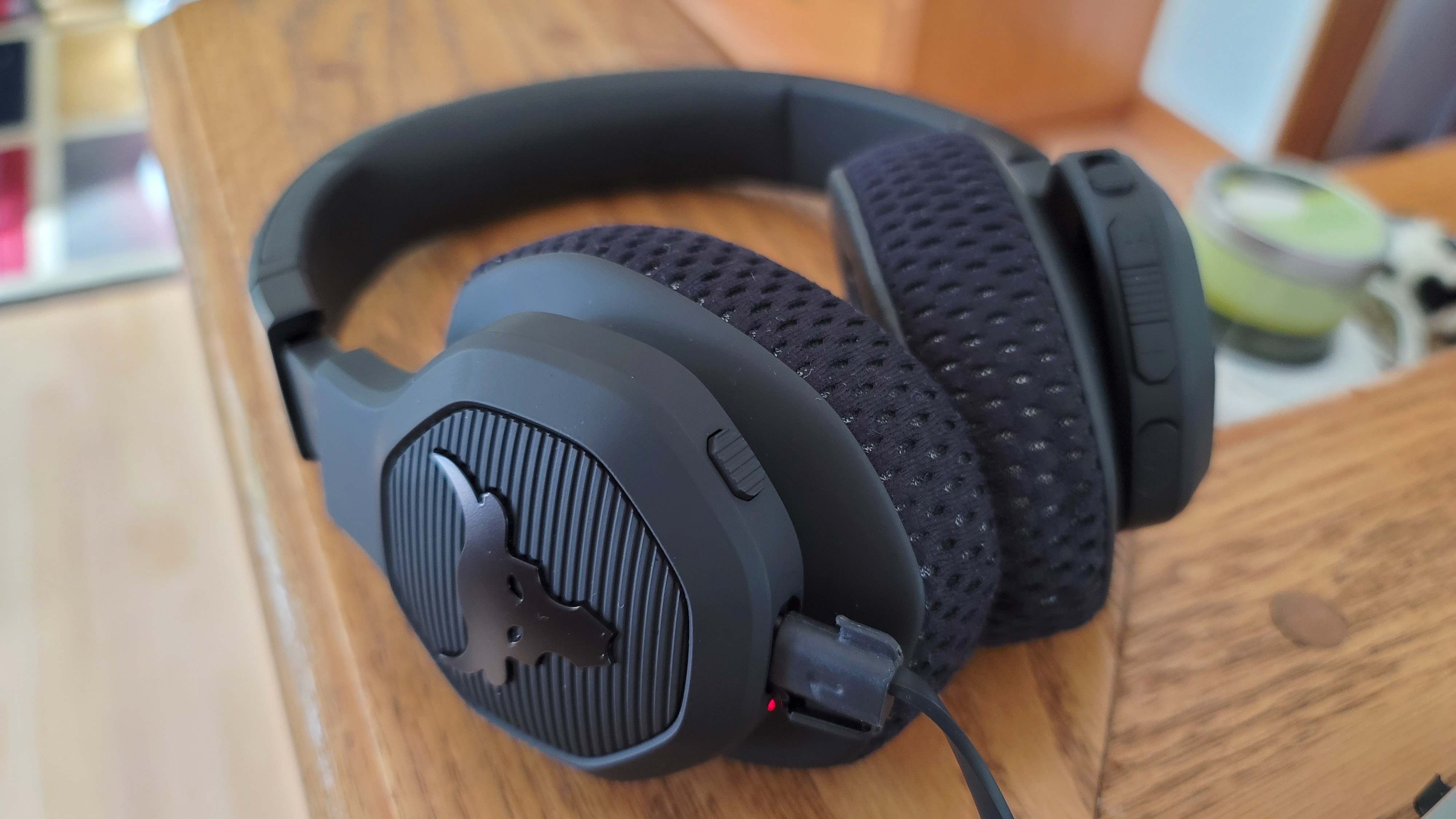
Either way, this crushes the 20 hours provided by the AirPods Max and Bose 700, as well as the Sony WH-1000XM4’s 30 hours. You easily have more than two weeks of use available, and that includes two-a-day workouts at two hours each. I’m still operating at about 30 percent battery life after moderately using these cans for the past three weeks.
If you think that’s impressive, check out the recharging capabilities on these giants. JBL’s quick-charging technology generates up to 2 hours of listening time on a 5-minute charge. Damn!
JBL UA Project Rock Over-Ear Training Headphones review: Call quality and connectivity
Only use the Project Rock Over-Ear Training Headphones as a calling headset if you’re in a pinch. The muffling issues both indoors and outdoors make it difficult to hold long conversations. Also, joggers should refrain from running and talking at the same time because the mics pick up lots of noise. The headphones will work fine for video chats. Several of the people I spoke with over Zoom and Google Meets calls had no complaints about clarity or volume.

Expect phenomenal connectivity via Bluetooth 5.0. The Project Rock Over-Ear Training Headphones come with a range of 50 feet, some of the highest in the category. I was happy to experience zero dropout when walking from room to room with my connected device (Google Pixel 3XL) charging in the office.
Pairing is instantaneous, especially on Android devices with one-touch Google Fast Pair. The headphones also connect to iOS/macOS devices quickly. JBL’s auto-connect technology lets you switch from one Bluetooth-enabled device to another without a hitch. Then there’s multipoint technology to connect the headphones to two devices simultaneously.
JBL UA Project Rock Over-Ear Training Headphones review: Verdict
The Project Rock Over-Ear Training Headphones aren’t just the best wireless sport headphones, at least in the over-ear category, but an argument can also be made about them being JBL’s best headphones to date. Craftsmanship is top-notch with a durable exterior that can withstand all types of punishment. JBL’s booming sound signature and presets will send bursts of energy through your body during workouts. The multi-level noise cancellation serves well for blocking out chatter and heavy machinery at the gym, plus the lengthy playtimes will relieve your low-battery anxiety.
Had JBL fixed the annoying digital assistant setup and decreased the clamp force on these bad boys (it can feel like your head is in a vise after a while), these headphones would have earned a complete 5-star rating. Either way, the Project Rock Over-Ear Training Headphones are as close to perfection as they come for sport headphones.
Alex Bracetti writes about all things related to audio at Laptop Mag. From insightful reviews of Sony earbuds to hands-on experience with the Beats Studio Pro, Alex covers everything you need to know in order to buy the best pair of headphones or earbuds. Alex has also written about speakers and audio apps. Outside of Laptop Mag, Alex's work has appeared in our sister site Tom's Guide.

